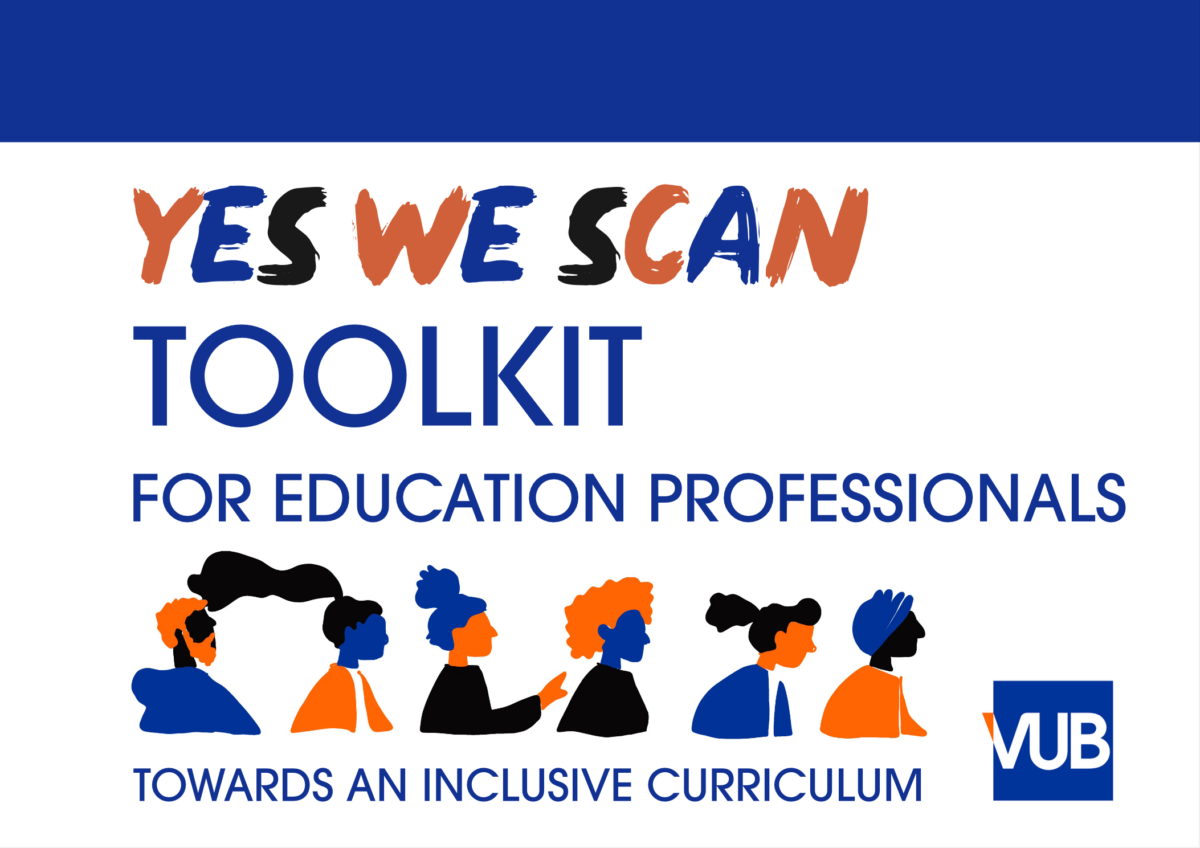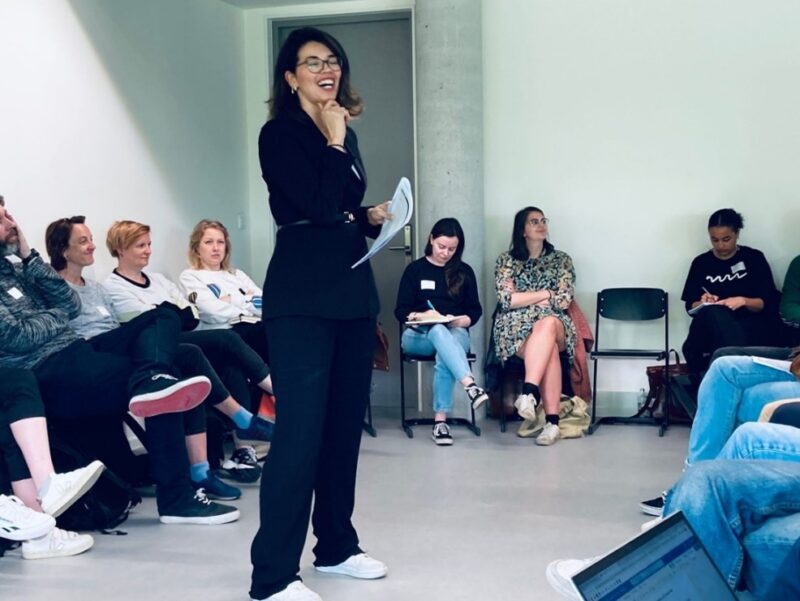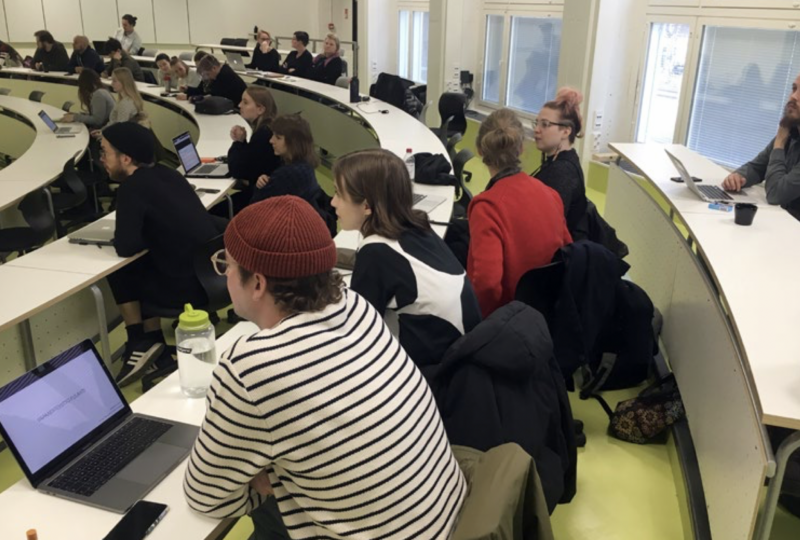Yes We Scan: towards an inclusive curriculum

This toolkit aims to provide some guidelines and inspiration for developing more diversity-sensitive and inclusive educational practices and offerings. Students can experience unequal learning opportunities and feelings of exclusion due to their cultural, linguistic and economic backgrounds, worldview, gender and sexual orientation, age and (dis)abilities. This can negatively affect their study experience, progress and outcomes, and result in early dropout.
With this toolkit, we wish to nourish reflection and dialogue on how to develop more diverse and inclusive curricula, learning materials and teaching activities. By doing so, we aim to support quality education and maximise learning opportunities for all students.
Download the Yes We Scan-toolkit in English
Download the Yes We Scan-toolkit in Dutch
WHAT WE AIM TO ACHIEVE
- equip lecturers, educational assistants and students with knowledge, skills and attitudes needed to contribute to a globalised and super-diverse world
- promote awareness and critical thinking regarding stereotypes, prejudice, racism and any other form of intolerance, injustice, exclusion and oppression
- create a safe and inclusive learning environment where diverse individuals, perspectives and knowledge are valued, and learning opportunities are maximised for all students
- allow students to experience a sense of belonging by seeing themselves and their diverse backgrounds reflected in academic curricula
- increase accessibility of the curriculum for all students
WHO THIS TOOL IS FOR
This toolkit is designed primarily for educational coordinators and assistants. It can be used as a reflection-instrument by individual teachers and teaching assistants: In what way are you paying attention to equity, diversity and inclusion in your teaching practice? What actions could you take to pay more deliberation to these issues?
With this toolkit we also aim to provide guidelines for educational teams. Use the sheets to share experiences and inspiration. Go over the information and tips together in preparation for a design- or improvement trajectory.
The tool can be used by educational support staff preparing training moments or support interventions.
Ideally, students get an important say in each of these processes.
HOW THIS TOOL CAN BE USED
This toolkit consists of several thematic info sheets which all follow a similar structure. A brief contextualisation of the topic is followed by questions for reflection, possible interventions and references. These sheets can be used individually or in combination. Depending on your specific needs and ambitions, one sheet can be more relevant than the other. The same goes for the suggested questions and interventions.
We also developed a selection of work sheets: these templates can be used individually or in team to work on specific assignments. The work sheets can but must not be used in combination with the info sheets. The toolkit is not a blueprint or a step-by-step plan that must be followed from A to Z. You decide which sheet is relevant for you or your team.
The toolkit also includes a reading list for those who wish to explore some topics in more detail, as well as a lexicon defining some key terms. It is important to mention that these terms are often not conclusive or static. In the future, we would like to expand the toolkit with additional thematic approaches and methodologies. By describing them, we seek to provide a common starting point for experience sharing and reflection.
In the future, we would like to expand the toolkit with additional thematic perspectives and methodologies. We will continue to fine- tune and update the existing sheets, fuelled by educational practice and scientific research.
HOW THIS TOOL CAME ABOUT
As part of the Equality Action Plan (VUB-GAP), the curriculum scan Yes We Scan – diversity in the curriculum was carried out (Christil Asamoah, 2019-2020). In this pilot project, six study programs accepted the invitation to go through the curriculum scan. This showed that non-Western perspectives were insufficiently visible in the scanned curricula. An important finding was that lecturers generally appeared eager to diversify their curricula, but found it difficult to put these ambitions into practice. One of the obstacles mentioned, was the lack of concrete recommendations and inspiring examples to integrate diversity into the curriculum. That is what we want to offer with this toolkit.
This toolkit was developed at Vrije Universiteit Brussel (VUB) in collaboration the CuSTm team (Curriculum Support for TeachersTeams) and CERL team (Community Engaged Research & Learning) of the Department of Education and Student Affairs, staff working on VUB’s Equality Action Plan, and students from VUB’s Green Team and WeDecolonizeVUB.
QUESTIONS, COMMENTS, OR INSPIRATION TO ADD TO THIS TOOLKIT? onderwijsprofessionalisering@otrs.vub.be

